
Filter News
Area of Research
- Advanced Manufacturing (1)
- Biological Systems (1)
- Biology and Environment (85)
- Biology and Soft Matter (1)
- Computational Biology (1)
- Computer Science (3)
- Electricity and Smart Grid (1)
- Energy Science (42)
- Functional Materials for Energy (1)
- Fusion and Fission (5)
- Isotopes (6)
- Materials (26)
- Materials for Computing (6)
- National Security (20)
- Neutron Science (20)
- Nuclear Science and Technology (2)
- Quantum information Science (2)
- Supercomputing (80)
News Type
News Topics
- (-) Big Data (49)
- (-) Biomedical (46)
- (-) Biotechnology (25)
- (-) Composites (15)
- (-) Computer Science (127)
- (-) Environment (130)
- (-) Exascale Computing (53)
- (-) Frontier (47)
- (-) Security (19)
- 3-D Printing/Advanced Manufacturing (73)
- Advanced Reactors (17)
- Artificial Intelligence (85)
- Bioenergy (74)
- Biology (86)
- Buildings (37)
- Chemical Sciences (46)
- Clean Water (16)
- Coronavirus (23)
- Critical Materials (6)
- Cybersecurity (20)
- Education (2)
- Emergency (3)
- Energy Storage (47)
- Fossil Energy (6)
- Fusion (47)
- Grid (35)
- High-Performance Computing (92)
- Hydropower (6)
- Irradiation (1)
- Isotopes (41)
- ITER (5)
- Machine Learning (39)
- Materials (82)
- Materials Science (75)
- Mathematics (8)
- Mercury (7)
- Microelectronics (3)
- Microscopy (31)
- Molten Salt (3)
- Nanotechnology (29)
- National Security (67)
- Neutron Science (95)
- Nuclear Energy (79)
- Partnerships (42)
- Physics (40)
- Polymers (14)
- Quantum Computing (37)
- Quantum Science (52)
- Simulation (46)
- Software (1)
- Space Exploration (14)
- Statistics (2)
- Summit (42)
- Transportation (41)
Media Contacts

Improved data, models and analyses from ORNL scientists and many other researchers in the latest global climate assessment report provide new levels of certainty about what the future holds for the planet
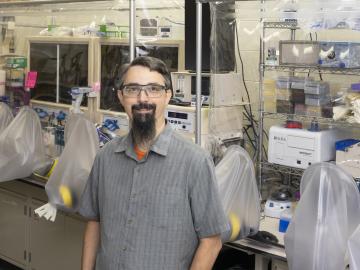
As a metabolic engineer at Oak Ridge National Laboratory, Adam Guss modifies microbes to perform the diverse processes needed to make sustainable biofuels and bioproducts.

Scientists at ORNL and the University of Wisconsin–Madison have discovered that genetically distinct populations within the same species of fungi can produce unique mixes of secondary metabolites, which are organic compounds with applications in
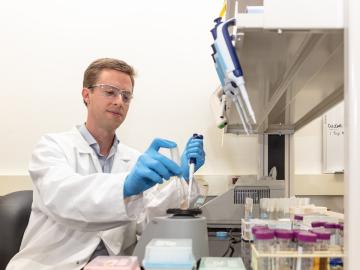
In a step toward increasing the cost-effectiveness of renewable biofuels and bioproducts, scientists at ORNL discovered a microbial enzyme that degrades tough-to-break bonds in lignin, a waste product of biorefineries.

As rising global temperatures alter ecosystems worldwide, the need to accurately simulate complex environmental processes under evolving conditions is more urgent than ever.

An ORNL-led team comprising researchers from multiple DOE national laboratories is using artificial intelligence and computational screening techniques – in combination with experimental validation – to identify and design five promising drug therapy approaches to target the SARS-CoV-2 virus.
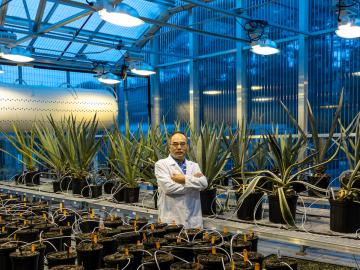
Scientists at ORNL have discovered a single gene that simultaneously boosts plant growth and tolerance for stresses such as drought and salt, all while tackling the root cause of climate change by enabling plants to pull more carbon dioxide from the atmosphere.
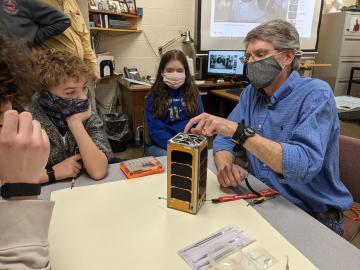
RamSat’s mission is to take pictures of the forests around Gatlinburg, which were destroyed by wildfire in 2016. The mission is wholly designed and carried out by students, teachers and mentors, with support from numerous organizations, including Oak Ridge National Laboratory.
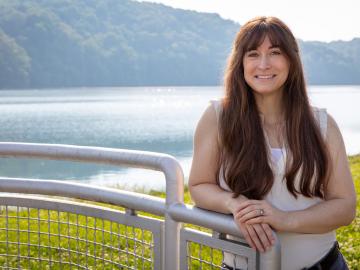
Carly Hansen, a water resources engineer at Oak Ridge National Laboratory, is rethinking what’s possible for hydropower in the United States.
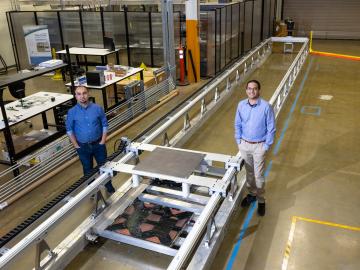
Consumer buy-in is key to the future of a decarbonized transportation sector in which electric vehicles largely replace today’s conventionally fueled cars and trucks.


